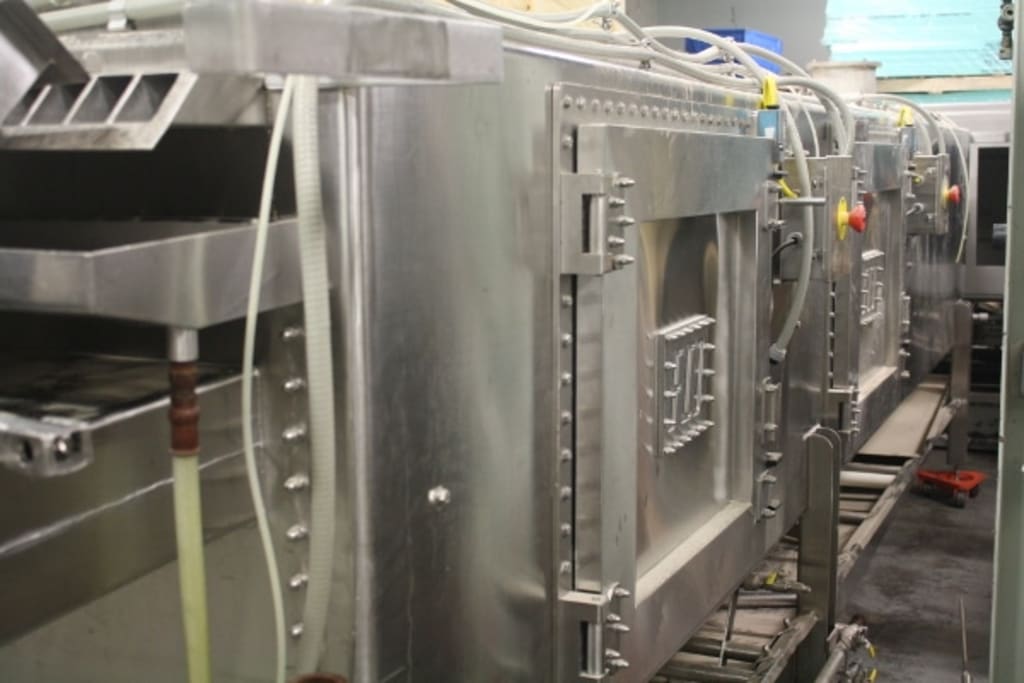Microwave Energy Powers Many Industrial Applications
Microwave Energy Powers

Kerone specializes in industrial heating solutions, including Microwave Energy, which offers rapid and uniform heating for diverse applications beyond pharmaceuticals. Industries harness this technology extensively, utilizing it for drying, sterilizing, and various other processes. Operating within specific frequency ranges, such as 915 and 2450 MHz, these systems ensure efficient use without interfering with other communication channels. Beyond textile-related uses, microwave heating finds applications in agriculture for drying grains and in the materials sector for applying coatings to rubber and plastic materials. Additionally, pharmaceutical companies leverage microwave radiation for drying powders, showcasing its versatility across different sectors for enhancing productivity and quality.
Due to the widespread usage of microwave ovens, microwave energy has been harnessed for significant purposes across numerous industries, extending beyond food warming. High-frequency electromagnetic radiation is commonly employed in industrial settings for dielectric heating. Industrial microwave heating systems operate within allocated frequency ranges to prevent interference with communications. Apart from cooking, microwave energy is utilized for tasks such as dehydrating wood and drying crops. In the materials industry, it enables the addition of coatings to rubber and plastic materials, as well as drying various powdered elements. This versatile energy source boosts output and enhances product quality across multiple sectors, revolutionizing operations and increasing productivity.
• Application
• Food Processing: Microwave energy rapidly heats and cooks food, eliminating bacteria and preserving nutrients, leading to safer and healthier food products with minimal processing time.
• Agriculture: Used for drying grains, microwave energy reduces moisture content efficiently, enhancing storage life and preventing mold growth, ensuring quality agricultural products.
• Lumber Industry: Microwave energy removes moisture from wood, accelerating the drying process and improving the strength and durability of lumber for construction and manufacturing purposes.
• Pharmaceuticals: Microwave energy dries powdered substances quickly and uniformly, maintaining product integrity and stability while reducing processing time and energy consumption.
• Materials Science: Enables precise application of coatings to rubber and plastic materials, enhancing surface properties such as adhesion, durability, and resistance to wear and corrosion.
• Futures
• Enhanced Efficiency: Microwave energy enables rapid and uniform heating, reducing processing time and energy consumption while improving overall efficiency in industrial applications.
• Precise Control: With precise power modulation, microwave systems offer fine-tuned control over heating processes, ensuring consistent results and minimizing product variations.
• Versatility: Microwave energy can process various materials, from food and pharmaceuticals to polymers and ceramics, making it adaptable to diverse industrial needs.
• Reduced Environmental Impact: By reducing energy consumption and minimizing waste, microwave technology contributes to a more sustainable manufacturing process.
• Improved Product Quality: Uniform heating and precise control prevent overheating or undercooking, resulting in higher-quality end products with better consistency and properties.
Advantages
• Rapid Heating: Microwave energy heats materials quickly and evenly due to its ability to penetrate deeply, reducing processing time and improving productivity in various industries.
• Energy Efficiency: Microwave heating directly targets materials, minimizing heat loss to the surroundings, leading to energy savings and cost-effectiveness.
• Uniform Heating: Unlike conventional methods, microwaves heat materials uniformly throughout, ensuring consistent quality and eliminating hot spots or unevenness in processing.
• Selective Heating: Microwave energy selectively heats materials based on their dielectric properties, allowing for precise control over the heating process and minimizing damage to sensitive components.
• Reduced Processing Time: The fast heating capabilities of microwave energy result in shorter processing times, enabling higher throughput and quicker turnaround for manufacturing operations.
Conclusion
• Due to the widespread usage of microwave ovens, microwave energy has been harnessed for significant purposes across numerous industries, extending beyond food warming. High-frequency electromagnetic radiation is commonly employed in industrial settings for dielectric heating. Industrial microwave heating systems operate within allocated frequency ranges to prevent interference with communications. Apart from cooking, microwave energy is utilized for tasks such as dehydrating wood and drying crops. In the materials industry, it enables the addition of coatings to rubber and plastic materials, as well as drying various powdered elements. This versatile energy source boosts output and enhances product quality across multiple sectors, revolutionizing operations and increasing productivity.
About the Creator
Enjoyed the story? Support the Creator.
Subscribe for free to receive all their stories in your feed. You could also pledge your support or give them a one-off tip, letting them know you appreciate their work.





Comments
There are no comments for this story
Be the first to respond and start the conversation.